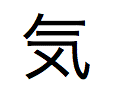Hello again from Japan, where the zipper in your pants is known as the “window of society” (shakai no mado).
As a foreigner living in Japan, I consider myself an honorary representative of the English-speaking world here, and do my best to present a good image to my Japanese hosts. Nothing is more embarrassing than having my own English abilities let me down for one reason or another, though. For example, there are times when a Japanese person will know some word that I’ve never encountered — doctors are always surprised when their gaijin patient isn’t familiar with a certain medical term, when clearly every English speaker must know every word that was ever coined. When I taught ESL I was often asked to explain the rules of English grammar, i.e. why this sentence takes a gerund but this one needs an infinitive verb, and all too often I was unable to produce an answer that satisfied my students. Sometimes Japanese people ask you to translate something into English despite the fact that the concept is untranslatable — since “my city is surely the city of water, poetry and vibrant greenery” is not much use to anyone, even if it is a technically accurate translation of a Japanese sentence. Most embarrassing are times when I can’t recall a certain vocabulary word. After fifteen years of living in a foreign country, some terms just sink into the nether reaches of your brain when not recalled for a long time. Then suddenly you need to use he word “obstetrician” and it takes you a minute of deep thought to bring it up.

The Japanese language is often thought of as being extremely difficult, and was called a creation of the devil to halt the spread of Christianity by the original missionaries that came here. I never thought of it as being that hard, although there is one area that is quite challenging for “white boy” gaijin, learning the kanji that are used to express the language in writing. Studying characters that are related to each other is one way to make it easier, and one of my favorite kanji is the enigmantic ki, which is usually translated as spirit, mind, or essence. This kanji shows up in some basic words, like genki (happy, energetic), byoki (sick) kuki (air) and kimochi (feeling). It’s used in martial arts, too, such as kiai (the spirited yells you make when you perform moves in karate or aikido). There are plenty of phrases that use the word, too. If you have a short ki (ki ga mijikai) you’re short-tempered, but someone with a strong ki (ki ga tsuyoi) is strong-willed and can take on any challenge.
Flowers and Spring go well together, and this Spring Japan seems poised for a “rose boom” (to go with this year’s “spice boom,” already under way), as companies bring out various products that make use of the fragrant flowers. Candles and incense that contain oils extracted from roses are popular items in hip department stores like Tokyu Hands, and retailers are always interested in finding new ways to package the pleasant aromas for consumers. One company sells high-quality cashmere sweaters dyed pink with rose essence that are just beautiful. The Japanese have a long history of serving flowers as a decorative food, part of the traditional kaiseki meals famous in Kyoto, and sure enough, beautiful Japanese dishes that contain rose petals (which may or may not be eaten, depending on individual tastes) are a hit this season.
J-List brings you Japan’s most excellent magazines via our “reserve subscription” service, a revolving subscription whereby we reserve the issues of Japan’s best anime, manga, music, fashion, hobby and other magazines for you. Today we’ve added a new item for you to enjoy: Cure, the excellent magazine of “Japaneseque Rock + Visual Styling” that’s loaded with vibrant pictures of Japan’s “visual-kei” and gothic bands. As usual, you never need to pay in advance for our subscriptions and you can stop or switch magazines at any time.















